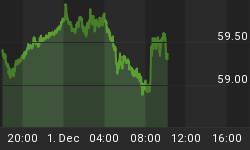With financial markets now under constant watch and the industrialized economies broadcasting bearish news on a daily basis, a country such as Mexico is easy to overlook. However, it might just be worth noticing that while most people are concerned about how the dollar is faring, some attention should be paid to what goes on south of the border with the peso.
A telling sign of relative economic strength in the US is workers' remittances to Mexico. This figure, tracked on a monthly basis, serves as both a barometer of the US economy and as a nice proxy for the quarterly current account figures in Mexico. Regarding the latter, remittances accounted for 2.35% of GDP in 2007 and provide a stabilizer to the external balances when the US is doing well. When the US economy slows, however, not only does Mexico sell fewer goods north of the border, but fewer dollars come south - which can be a problem for the current account balance.
Remittances fell by 12% year on year in August (the sharpest drop since the series started) and 4% in January-August 2008. Last year was not a particularly great year for Mexican expatriates as growth in money sent home remained static. Now, this sharp drop suggests harder times ahead, and perhaps even liquidity concerns down the road if this key source of support narrows further.
Chart 1
We forecast that US import demand will soften significantly over the next 12 months, which will negatively impact Mexico's balance of payments situation. Also, the marked drop in oil prices will be another hit to export earnings looking forward. It would indeed be hasty to suggest that a balance of payments crisis is looming for Mexico, but it is worth remembering that when the waters in the US get choppy, they have a nasty way of spilling across the Rio Grande. And considering the breadth and magnitude of the current financial crisis, it may be a good time to reassess Mexico's near-term outlook.
















